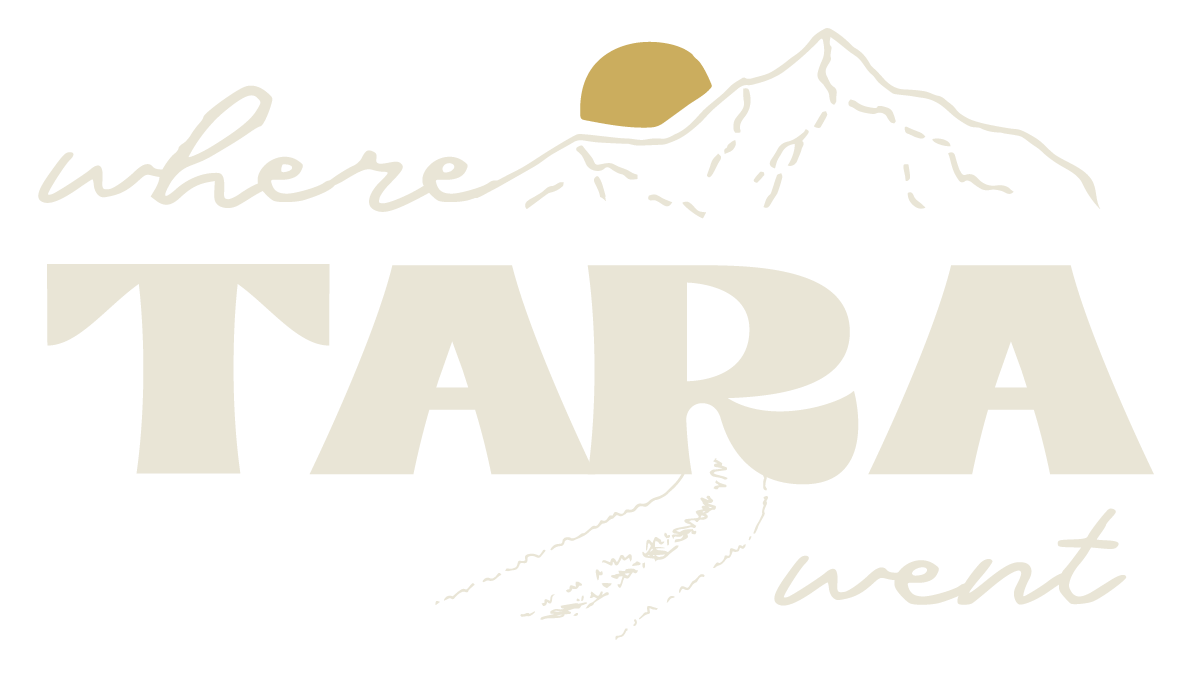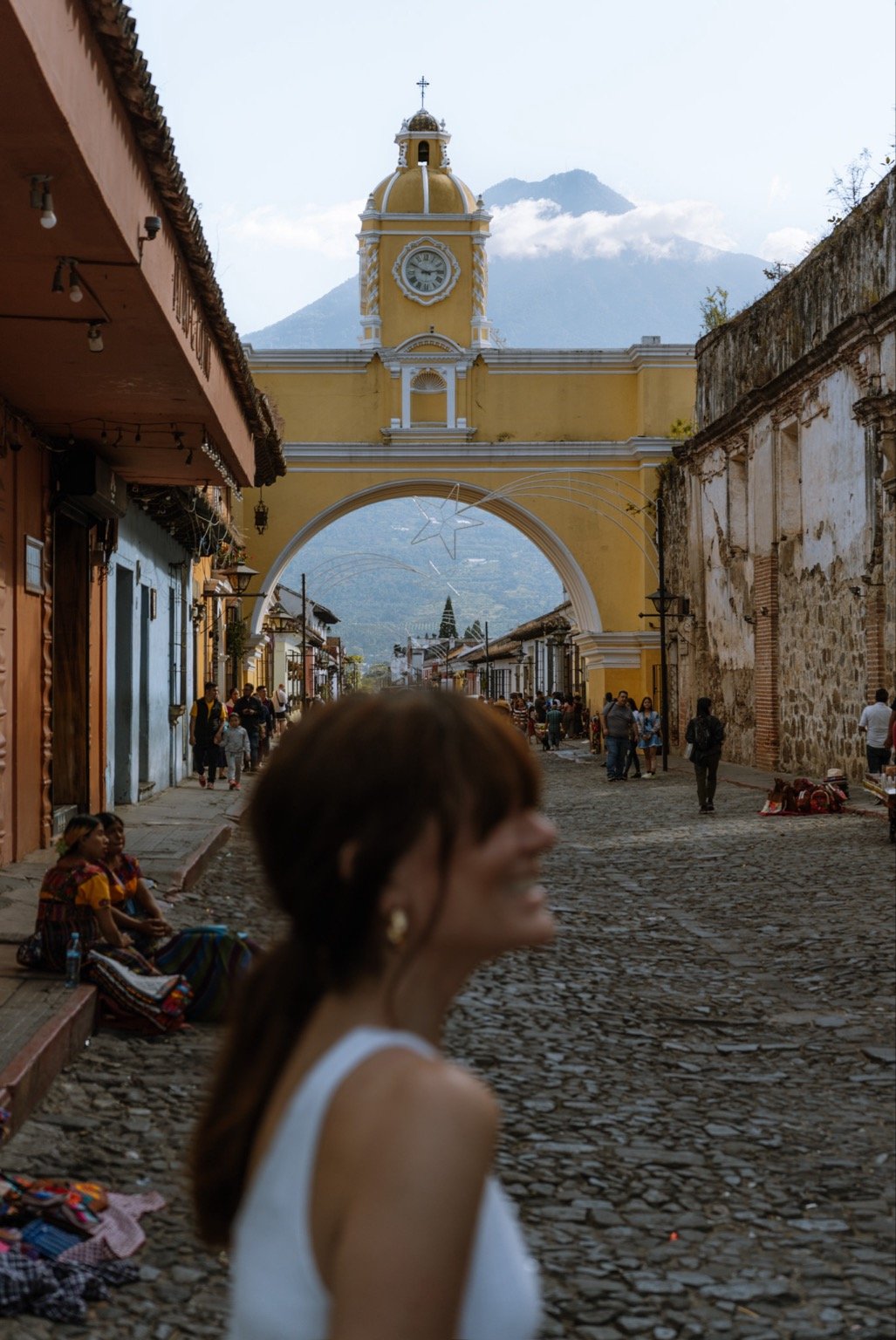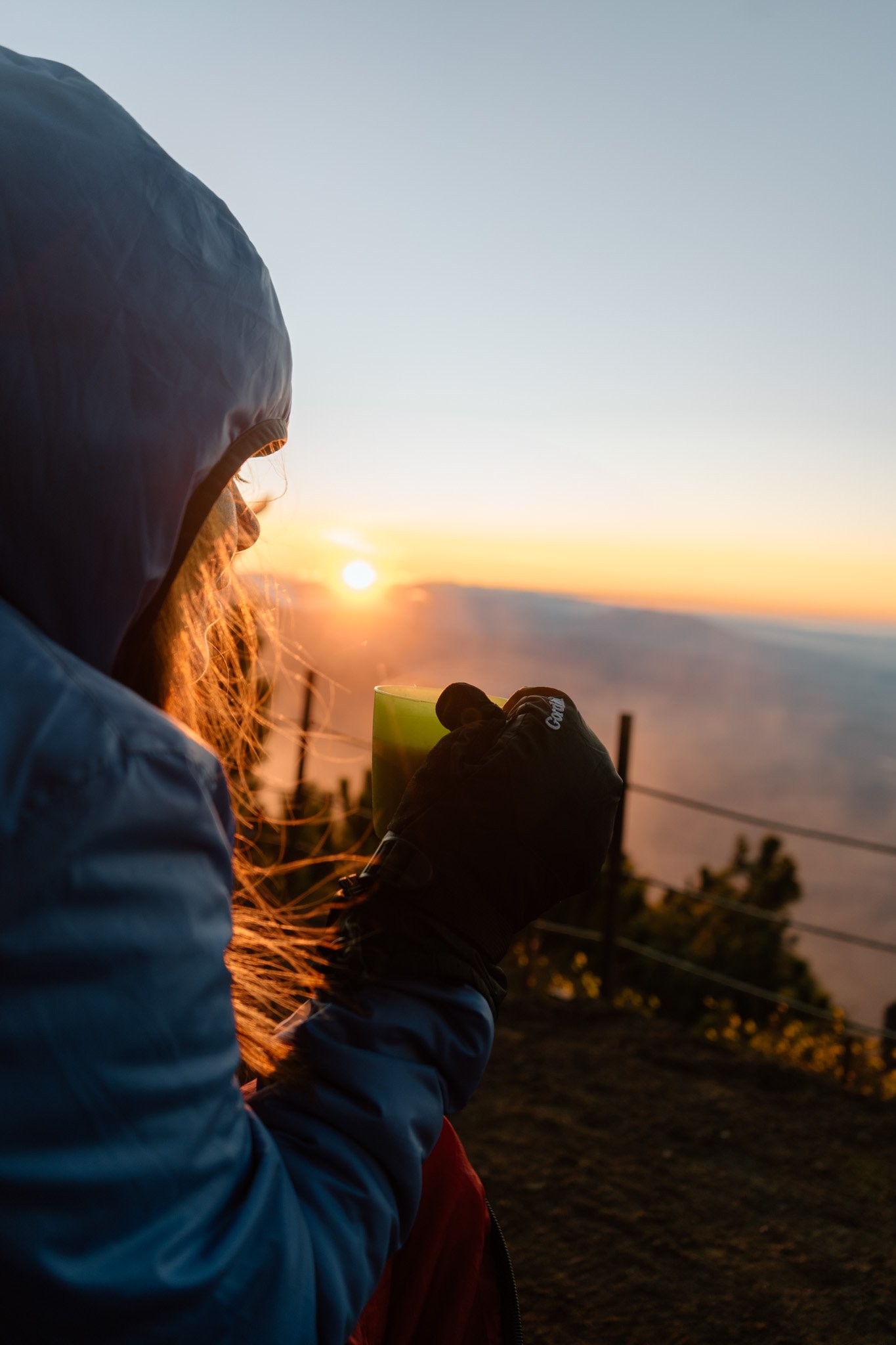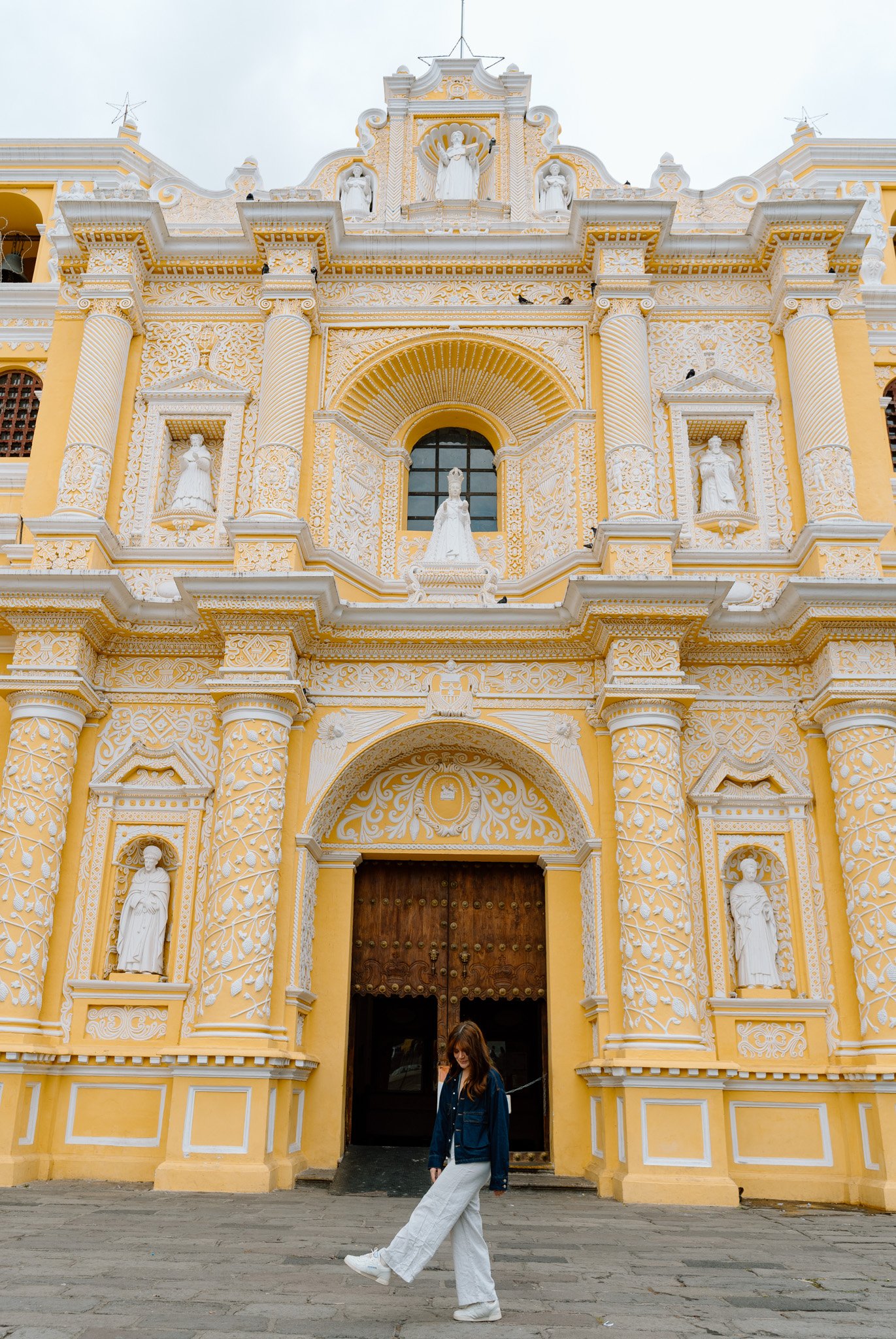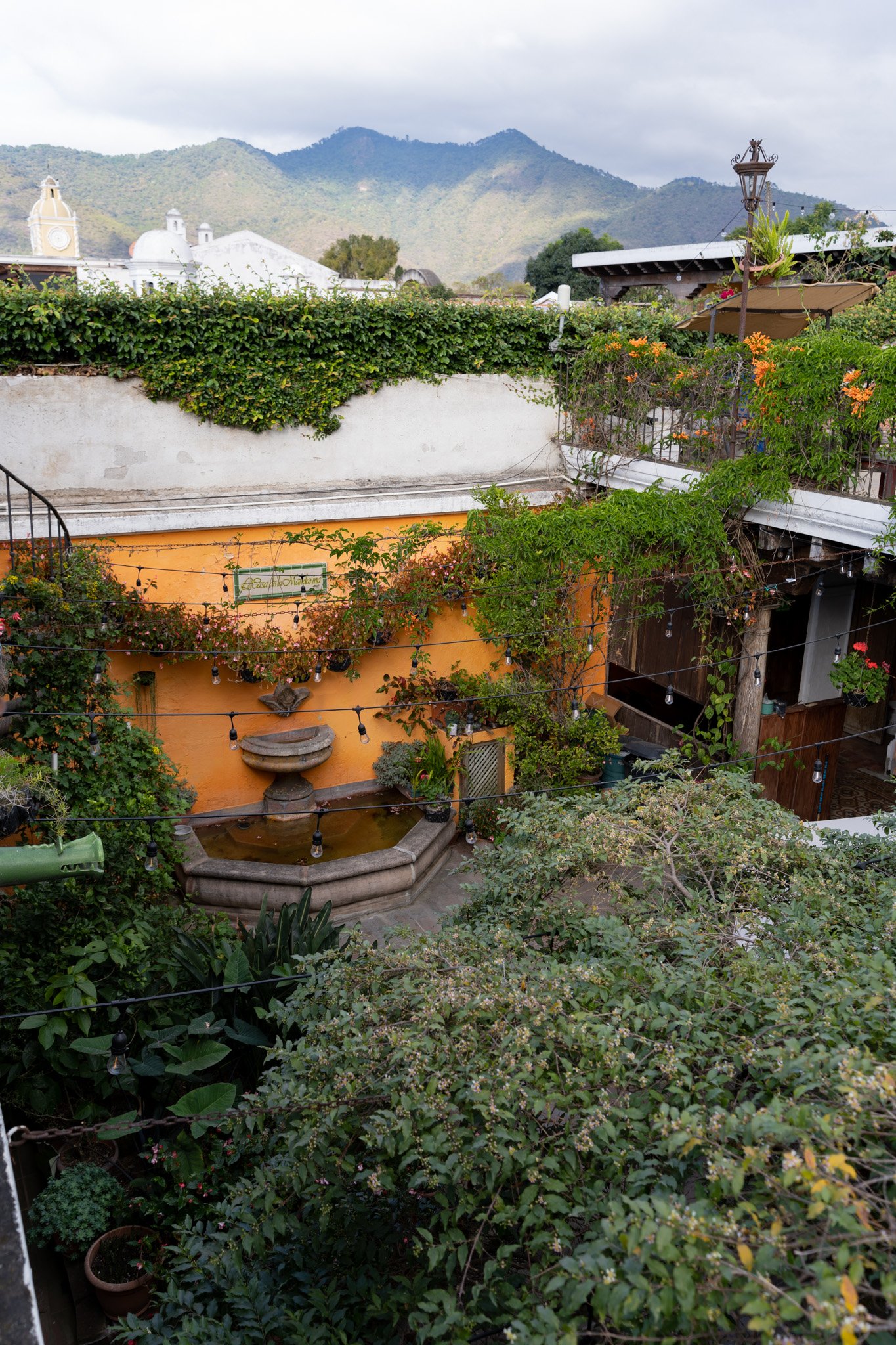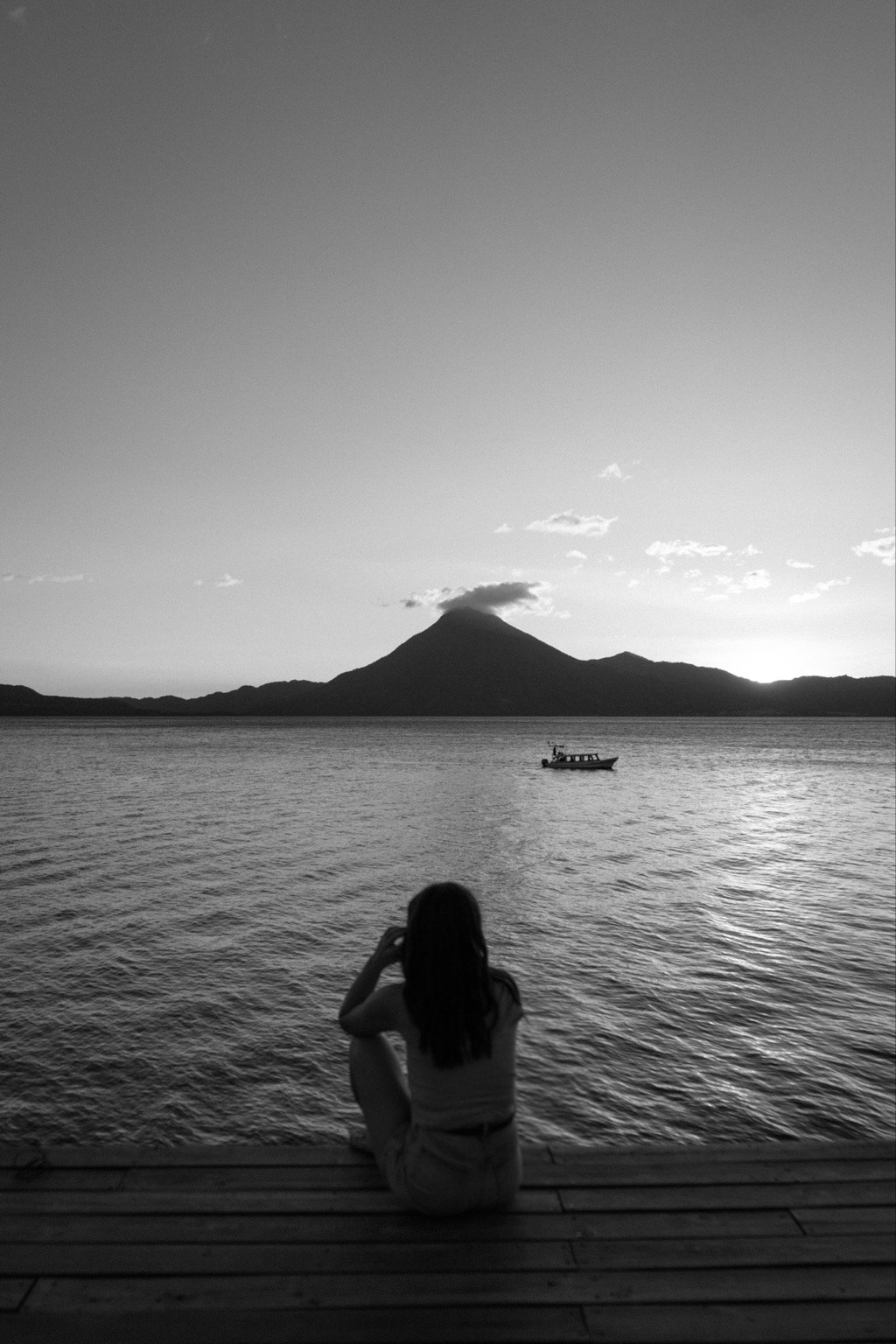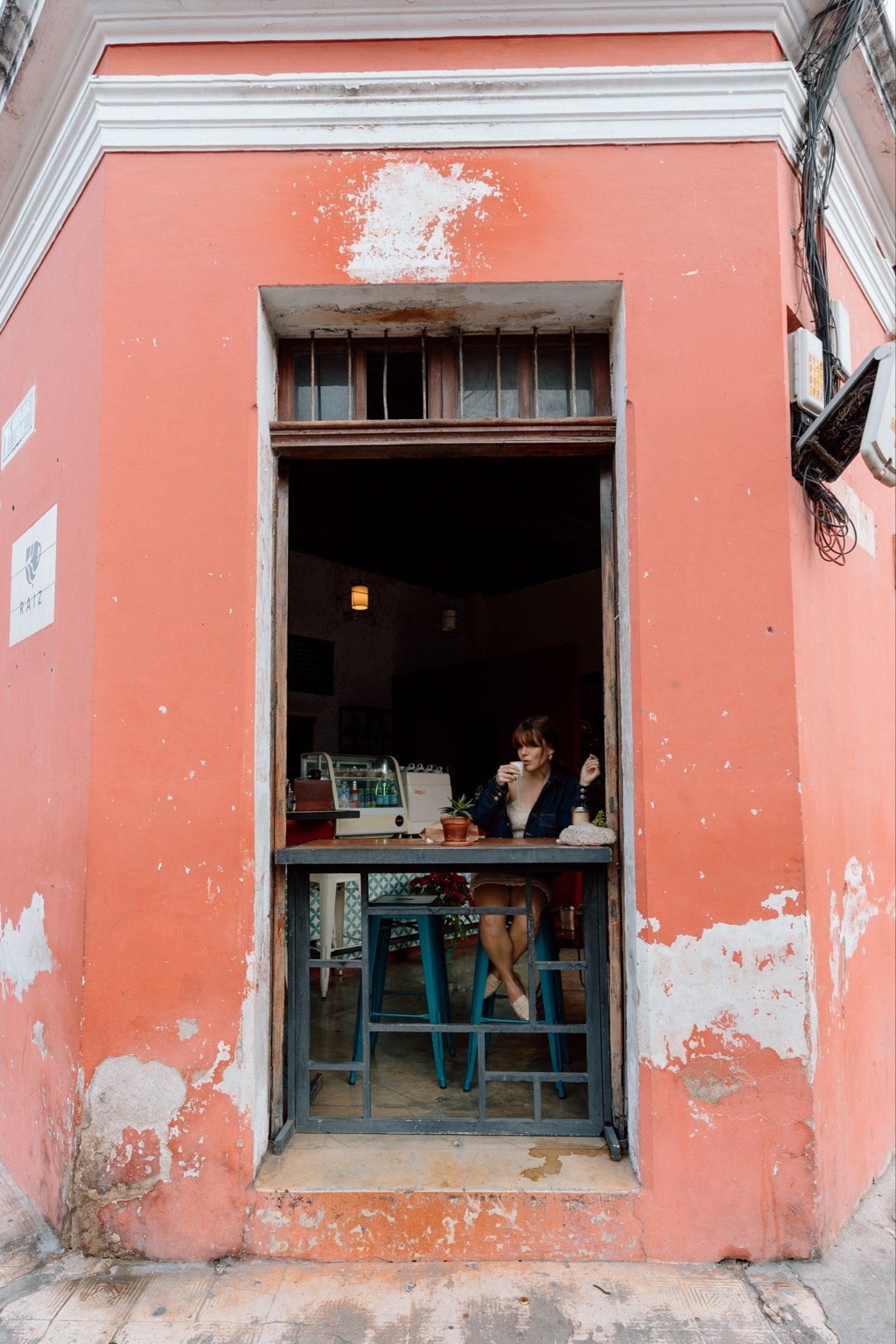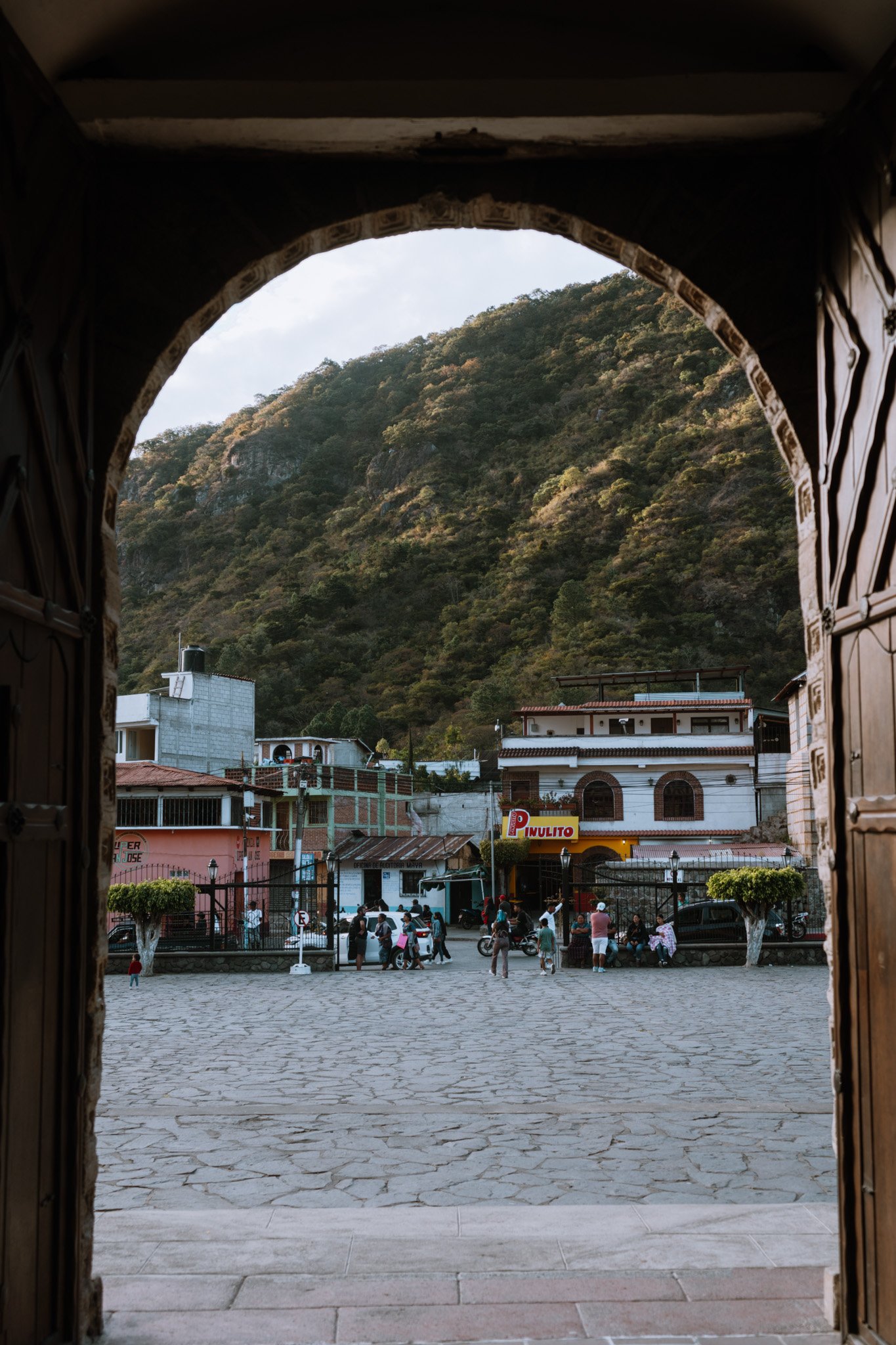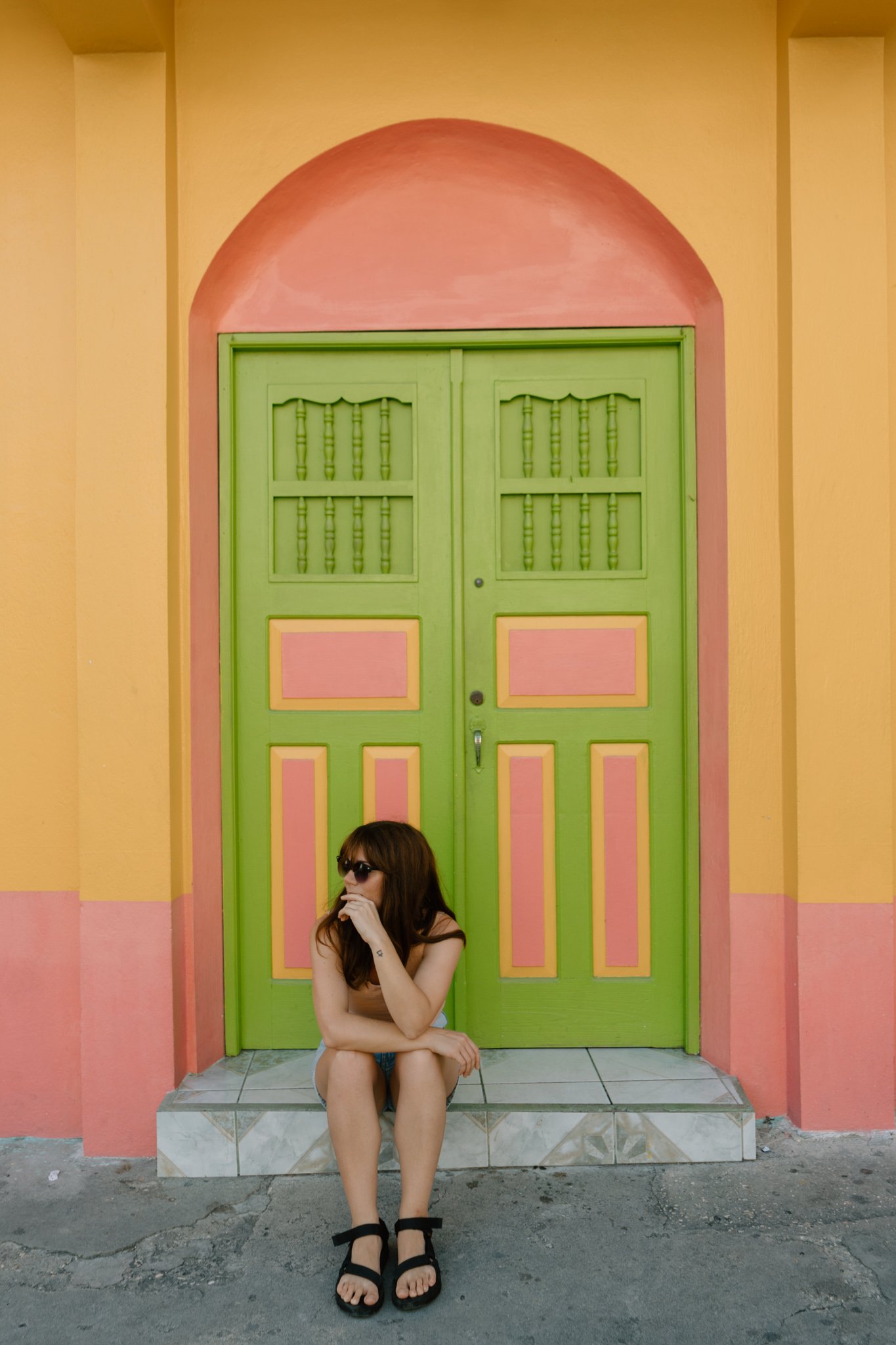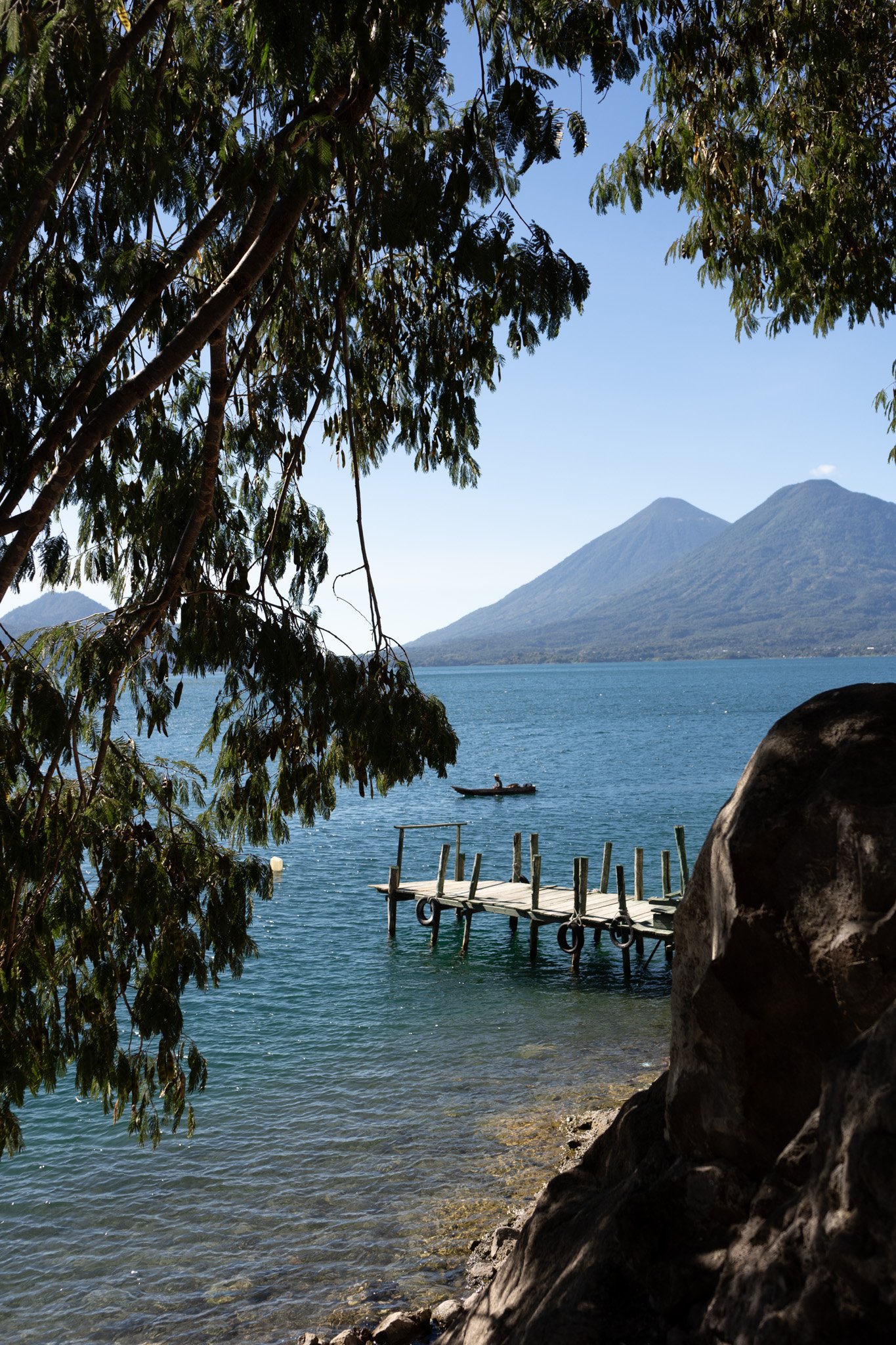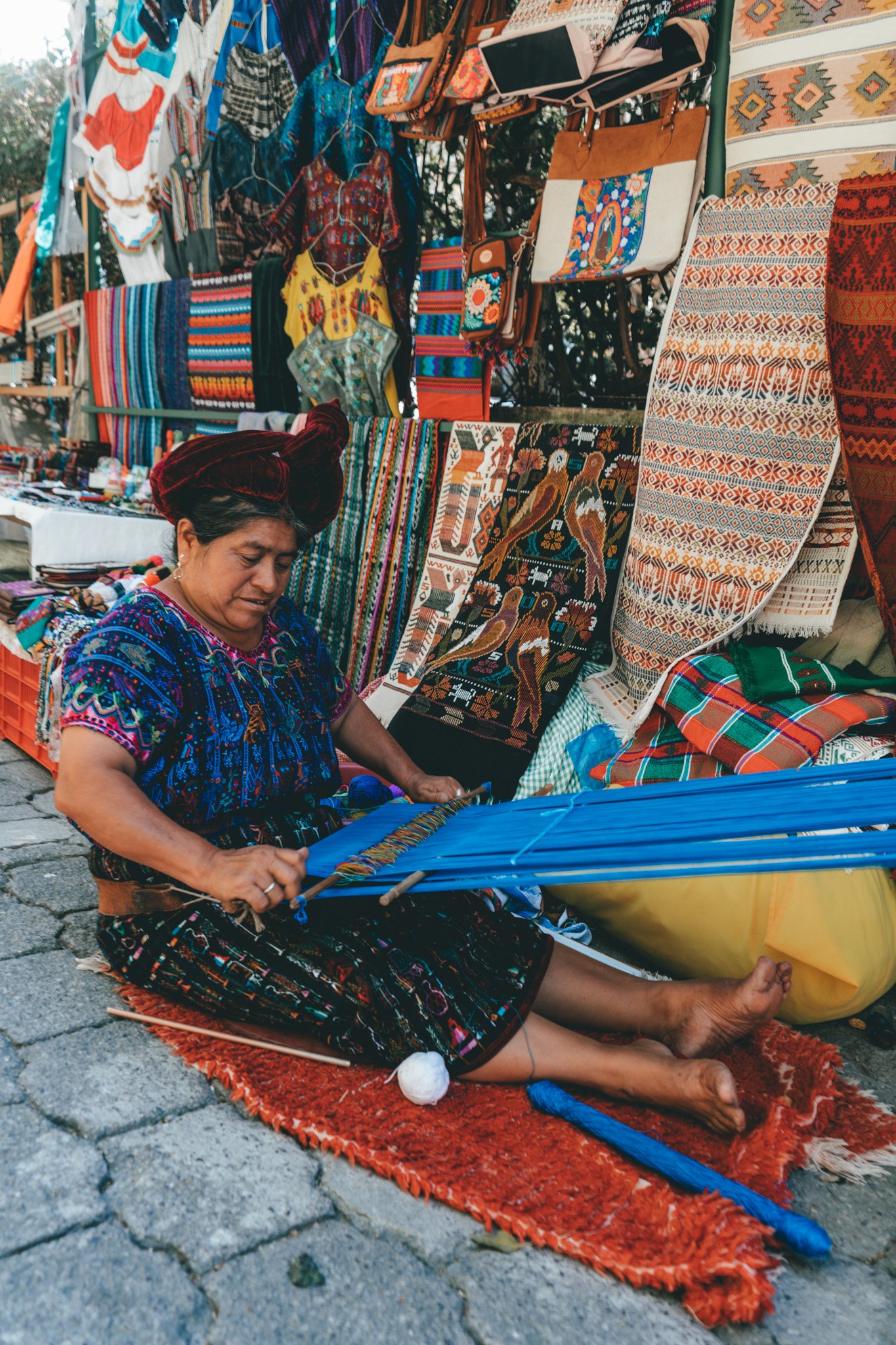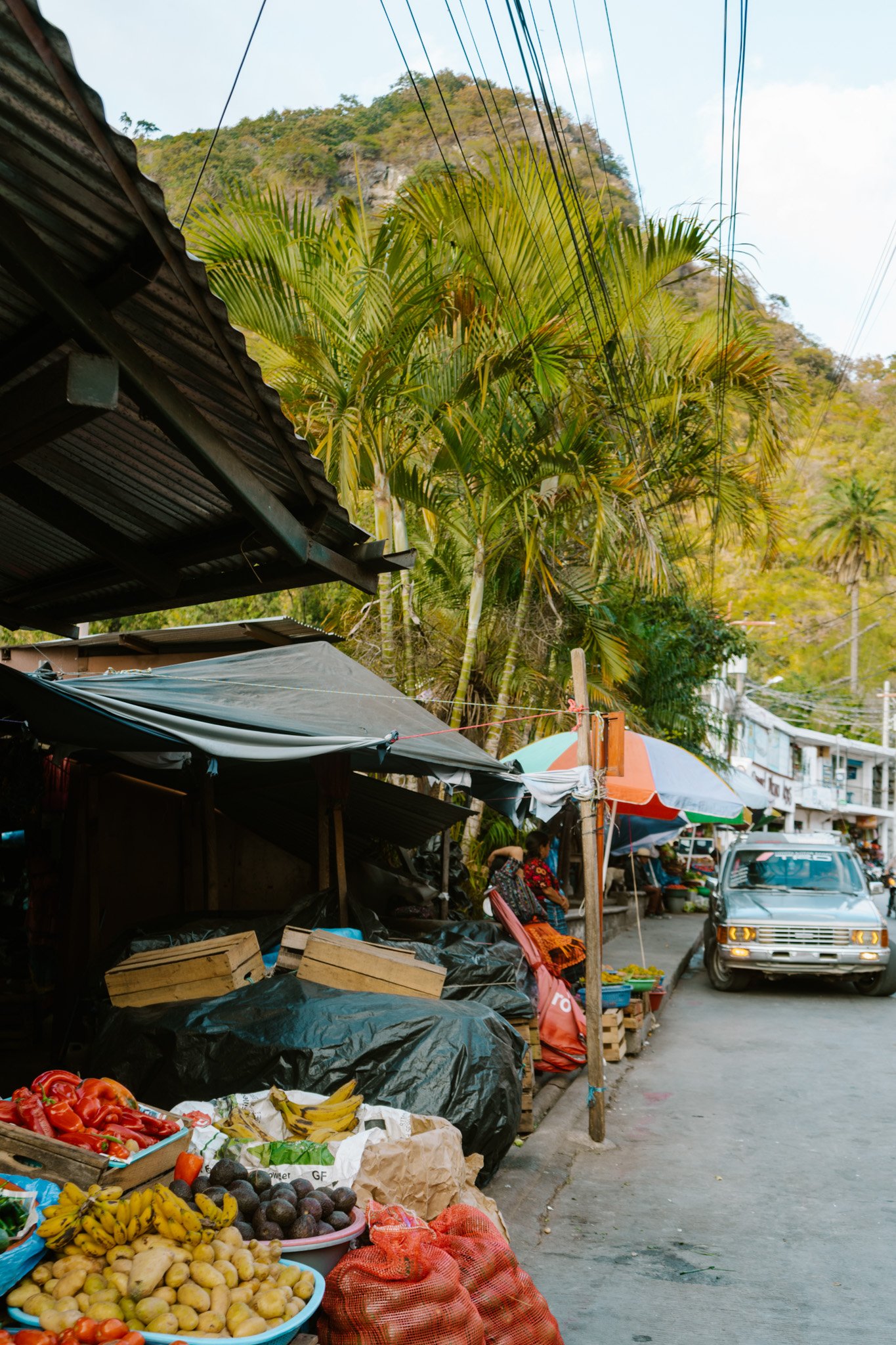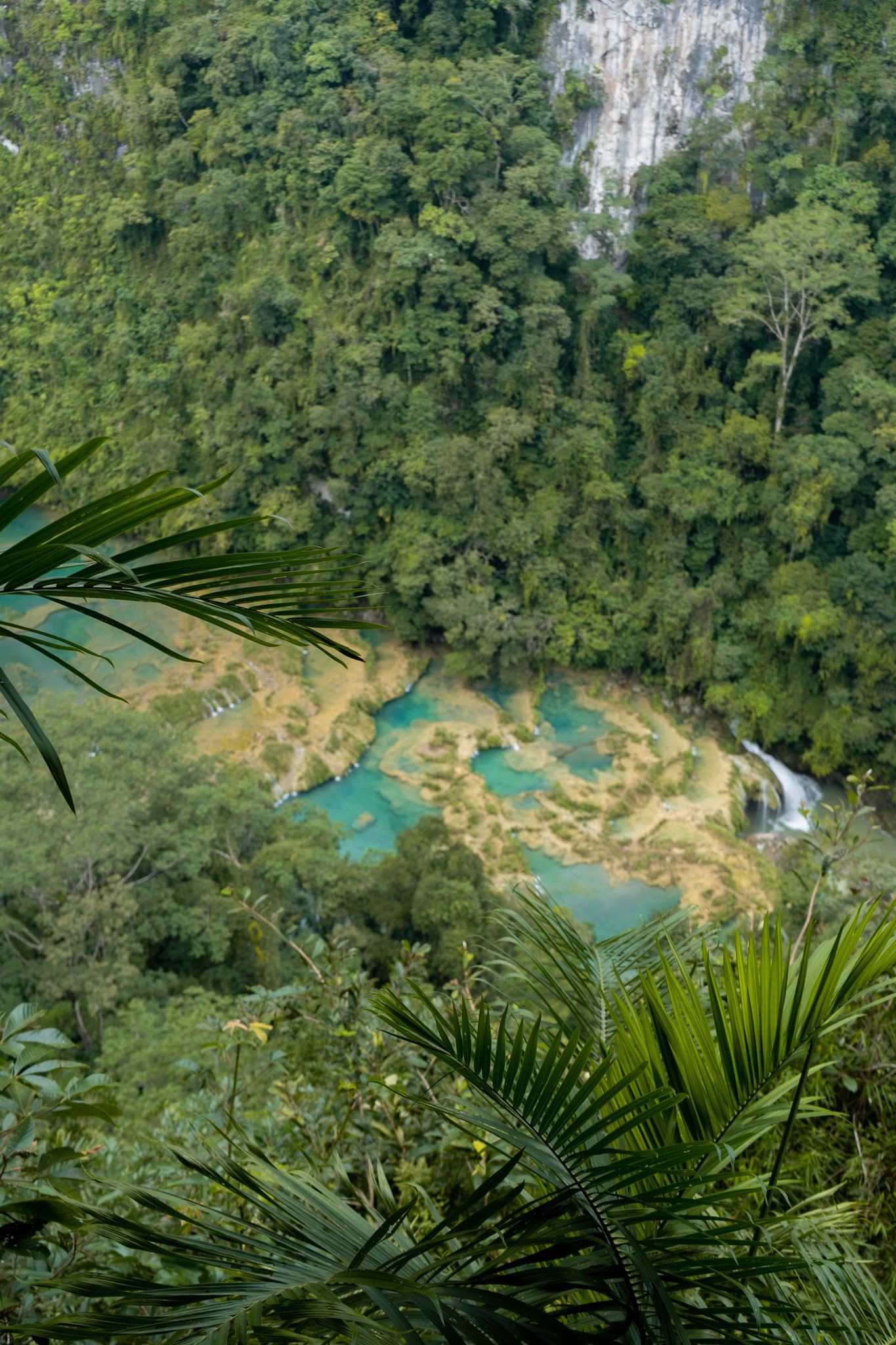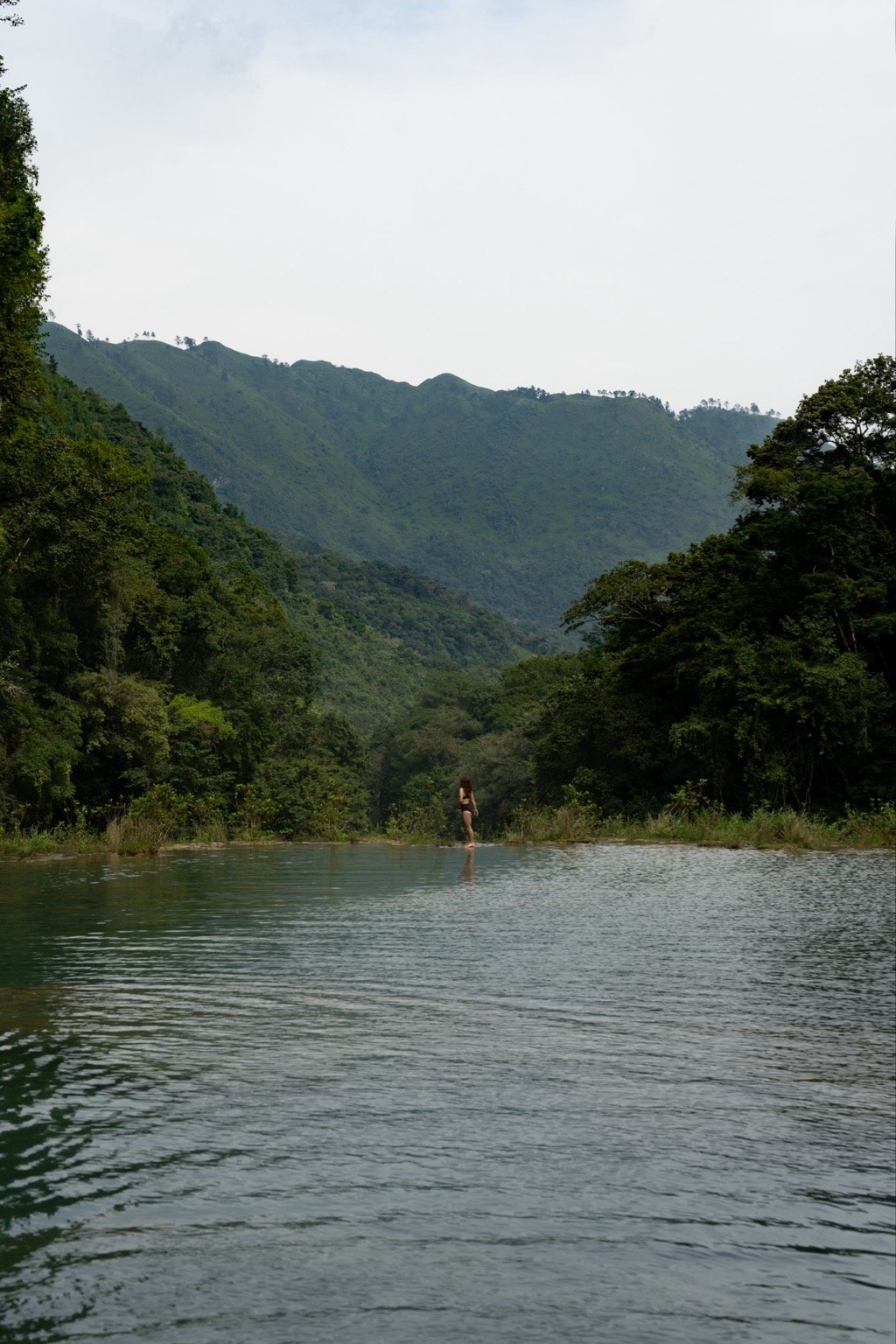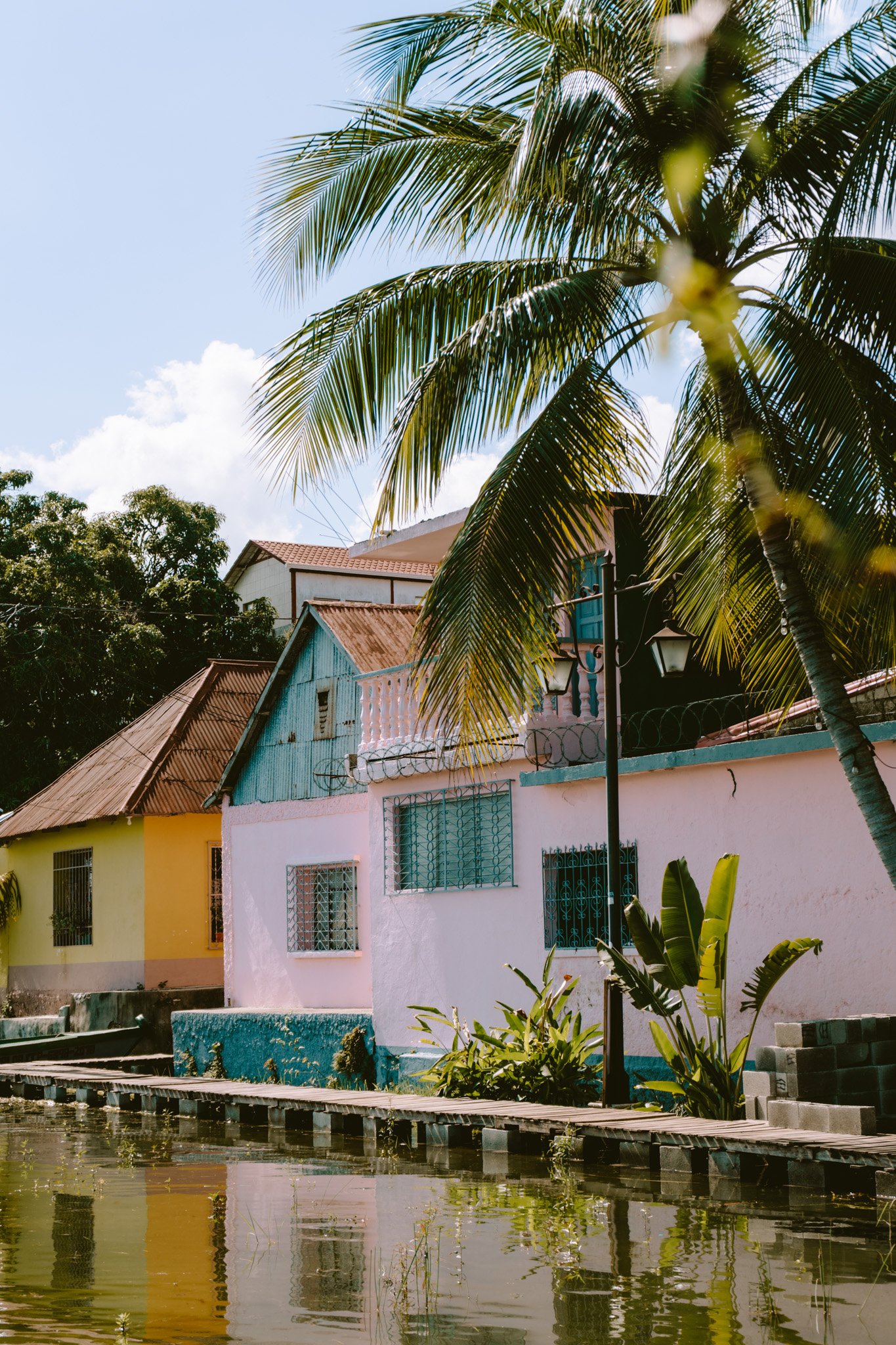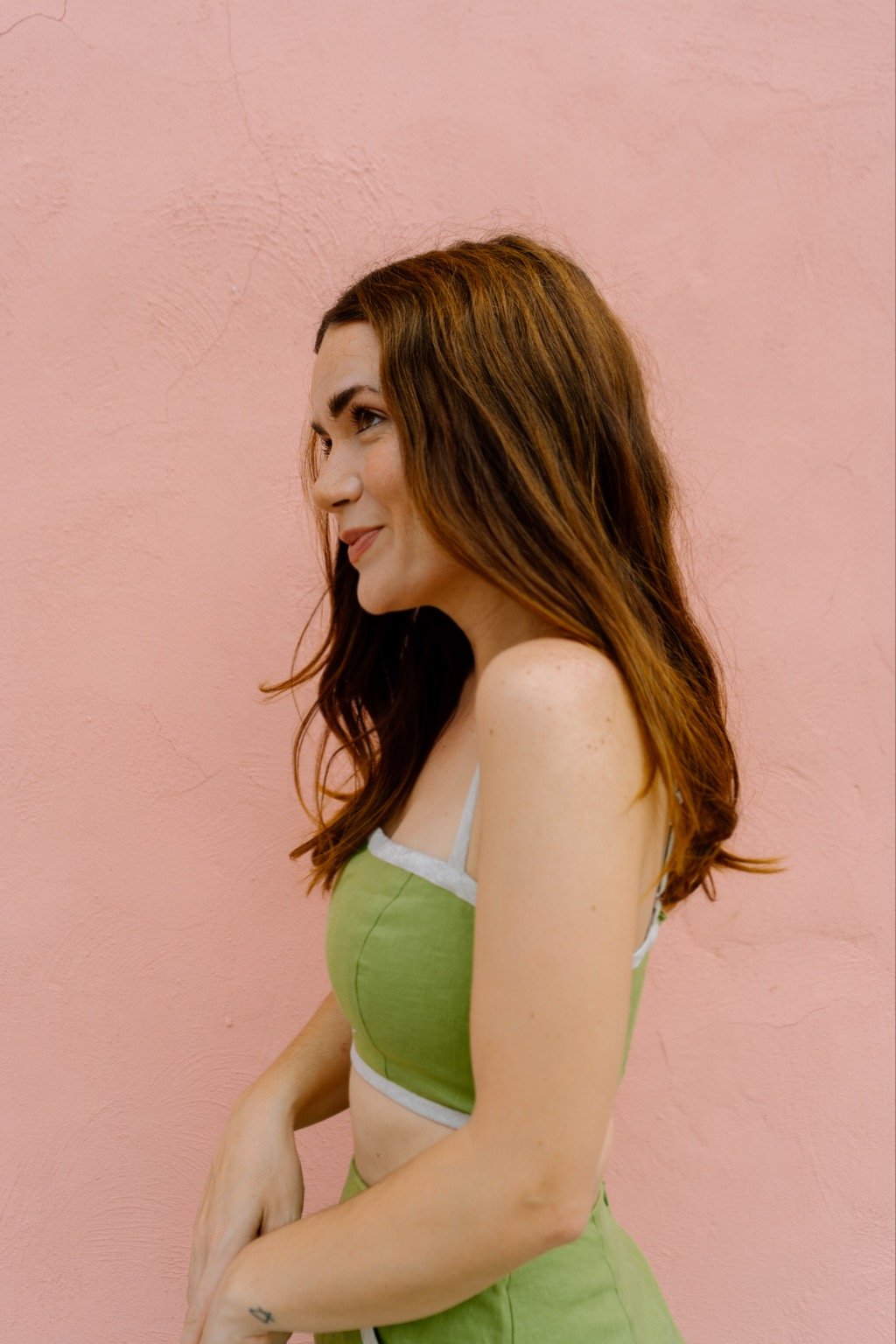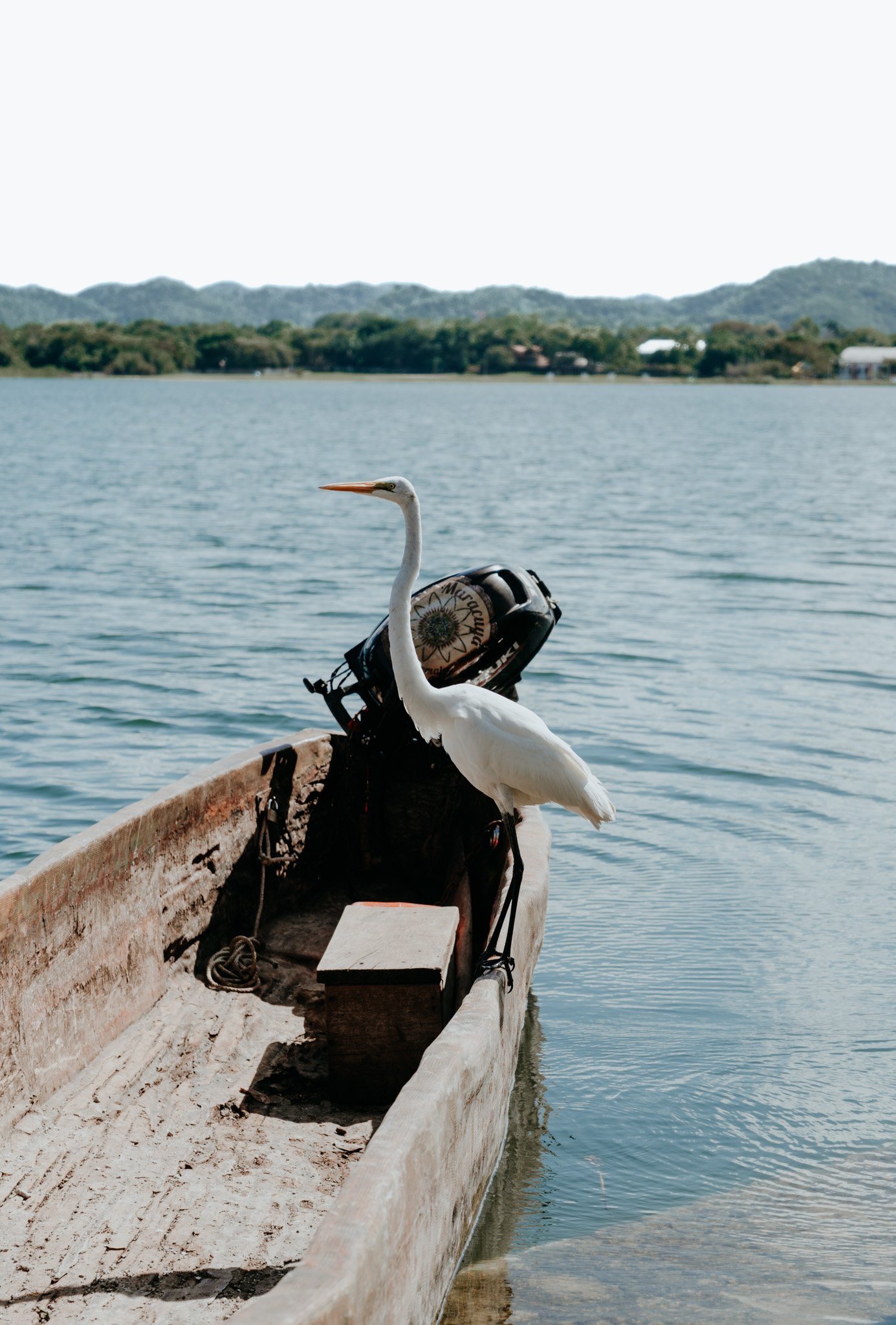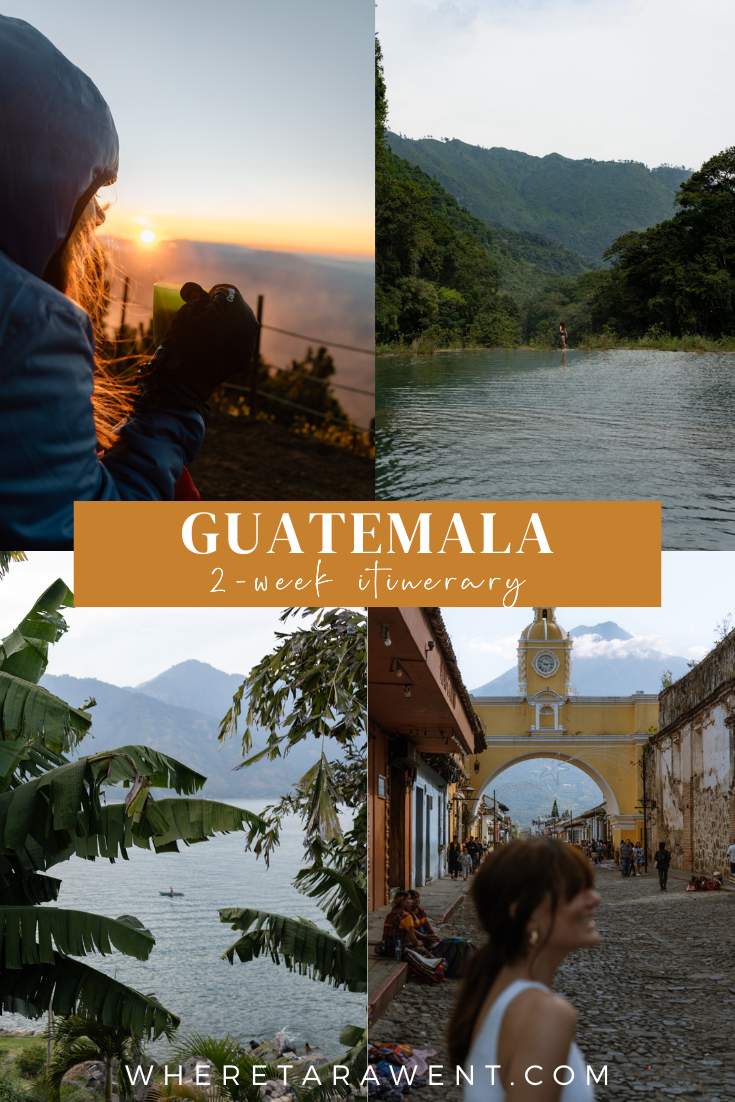2-Week Guatemala Travel Itinerary: The Perfect Guatemala Itinerary for First-Timers
This 2-week Guatemala travel itinerary is brimming with all the essential information you need to plan your trip, as well as tips for every stop. Don’t travel to Guatemala before reading this 2-week adventure itinerary.
During my month-long journey through Guatemala, I became acutely aware of its magic. I hope that, armed with this 2-week itinerary, you can recognize it too.
At the crossroads of Catholicism and Maya belief, volcanos shoot up from the jungle-swathed hills that make up the horizon. Crooked cobblestone streets create labyrinths amongst colorful colonial buildings. Men speed through treacherous hairpin turns in clunky chicken buses. Women sell freshly squeezed fruit juices in island heat beneath the reprieve of palm leaves. Markets filled with hand-embroidered textiles blast modern music across from earthquake ruins. The horrors imposed on the Maya stand in stark contrast to the warmth and welcoming nature of everyone you meet.
Yes, undoubtedly, there is magic in Guatemala. And I have done my best to capture the best of it in this perfect 2-week itinerary. From how to get around and where to stay, to when to visit and what to do— this itinerary covers it all in-depth so you can fully immerse yourself in Guatelmala’s wonders.
why visit Guatemala ↴
First of all, why not?! Secondly, I can think of so many reasons. Guatemala has a bit of something for everyone. For adventure travelers, there’s stand-up paddleboarding in Lake Atitlán, swimming in Semuc Champey’s turquoise pools, and volcanic hiking throughout. Looking for rest? Consider an eco-hotel stay complete with daily yoga in San Marcos or a slow-moving stay on sunny Isla de Flores. Those seeking cultural activities can visit ancient Maya sites or participate in traditional weaving workshops. There really is no losing! If you like Costa Rica or México, but are looking for a lesser-visited destination in Central America, chances are you’ll love Guatemala.
the best time to visit Guatemala ↴
Guatemala has two seasons: wet and dry. The dry season (November through April) will treat you to blue skies and warm temperatures. Dry Season is, of course, the more popular time to visit. Plan for crowds, price inflation (particularly for accommodation), and booking tours in advance.
During the wet season (May through October), prices are much lower, but the weather is often wet and gray. The mornings during the wet season are usually dry, so if you’re an early riser and a budget traveler you may be in luck!
how long to spend in Guatemala ↴
Guatemala is a hard place to leave, so any length of time often feels too short. I spent an entire month traveling through Guatemala and could have stayed longer. I’m also an advocate for slower travel, so I always recommend lengthening your stay rather than moving at a break-neck pace through destinations. However, if you’re short on time or vacation days (totally understandable), this 2-week itinerary will allow you options.
For first-timers in Guatemala, I wouldn’t spend anything less than two weeks. With long distances between main cities and attractions across Guatemala, you easily lose full days transferring between towns. Two weeks in Guatemala gives you a good introduction to the country’s bucket list destinations, adrenaline adventures, and outstanding natural landscapes.
Keep reading for itinerary additions and alternatives I highly recommend!
how to get to Guatemala ↴
The easiest and most convenient way to reach Guatemala is by air. La Aurora International Airport in Guatemala City is the primary gateway for international flights. Many major airlines operate regular flights to and from Guatemala via this airport. It’s well-connected to Europe and the Americas.
You can also arrive in Guatemala by utilizing the available overland travel options. If you’re already in Latin America, you can enter Guatemala by land border crossing via bus or private transportation. Guatemala shares borders with Mexico to the north and west, Belize to the northeast, Honduras to the east, and El Salvador to the southeast. These border crossings offer a chance to witness the changing landscapes and immerse oneself in the local culture before reaching the heart of Guatemala.
getting around Guatemala ↴
What’s less than ideal about travel in Guatemala is that the only way to get around is by road, except for the Flores and Guatemala City airports. While you absolutely can rent a car, I would caution against this. The roads in Guatemala are poorly maintained and tricky to drive at the best of times. Unless you are an exceptionally experienced driver, I recommend tourist shuttles and public buses. These two options are your best bet.
Please note: I have assumed that you will be utilizing shuttle services for this 2-week Guatemala itinerary. This itinerary has planned for morning departures, which is the most typical timing for shuttles. If you decide to travel by public transport, you may have extended travel times.
PUBLIC TRANSPORT IN GUATEMALA
If you’ve traveled through Central America for any length of time, you’ve likely heard chicken bus horror stories. I promise they aren’t that bad. They’re a quintessential part of the Guatemala travel experience, which is why I’d recommend giving them a go at least once. Chicken buses are former US school buses that have been shipped over to Guatemala. Each bus is customized with bright paint and flashing light installations to create a lively rider experience. They typically cover rural areas with journeys lasting roughly 1 hour. For longer distances, you will need to change chicken buses multiple times. These are ideal for budget travelers with flexible itineraries. However, they’re not very safe or comfortable, so tourist shuttles are a better option overall.
Both more reliable and comfortable than chicken buses, Pullmans are special long-distance buses. Most notably, they travel internationally between Belize, Mexico, El Salvador, Nicaragua, and Honduras. They’re typically more expensive than chicken buses, and like chicken buses, they drop you at the main bus terminals of each town (shuttles often drop you off at your hotel).
Tourist shuttles
Shuttles are the preferred way to traverse Guatemala for most travelers. They’re relatively well-priced, though more expensive than chicken buses, and are very easy to organize. Every hotel or guesthouse can arrange a shuttle, and if they can’t, there are tour agencies throughout each town that exist for this exact purpose. Honestly, for (relative) speed, convenience, and safety, you can’t beat the shuttles.
Uber
When we arrived in Guatemala City, we had arranged transport with our Antigua hotel. However, our driver never showed up (the hotel was extremely apologetic). Luckily, Guatemala City is the one place we used the Uber rideshare app. Our Uber from Guatemala City to Antigua, which is roughly a 1.5-hour journey depending on traffic, cost us approximately 300 QTZL. This is definitely more expensive than using a shuttle (and more spendy than what our hotel quoted us), but we arrived relatively late in from México, desperate for a bed.
travel tips for Guatemala ↴
SIM cards
We originally planned to grab SIM cards from the official Claro shop in Antigua upon arrival. However, the nice man working there sent us to the town’s major supermarket, La Bodegona, to pick up a tourist SIM card. We found tourist SIMs available at most supermarkets and corner shops in the major towns throughout Guatemala (Flores, Lanquin, Antigua, Panajachel, etc.).
ATMS
Apart from Antigua, Luke and I found Guatemala to be a cash-heavy country. This means that credit and debit card payments were either not accepted or came with a steep surcharge (one place charged a 20% card fee!!). There are ATMs/cash withdrawals in the major towns. We used the yellow “5B” ATMs, but there was a 50 QTZL fee for our Visa card and a 30 QTZL fee for our Mastercard. These machines did have a 2,000 QTZL maximum withdrawal. There were other ATMs we tried using, but they always spit out our card and declined our withdrawal requests, so we stuck with the 5B machines.
CURRENCY exchange
We came prepared with a stack of crisp GBP to exchange but found very few currency exchanges. Of the few that we found, only one would exchange GBP and the rate was atrocious. The exchanges did accept Mexican Pesos and American Dollars, and a few accepted Euros. We decided to withdraw cash to avoid the terrible exchange rates.
what to pack for Guatemala ↴
What you pack for Guatemala will ultimately be dictated by your planned activities. This packing list is specific for those following my 2-week Guatemala travel itinerary.
Hiking boots | I would also recommend hiking boots. If you’re hiking the Acatenango Volcano, they are a must, and if you are visiting Semuc Champey, they’re helpful and supportive for hiking the slippery wooden stairs to the lookout point.
Insect repellent | Around Lake Atitlán, Semuc Champey, and Flores, we were eaten up by mosquitos. Luke and I decided to buy insect repellent from a local pharmacy in Panajachel. I would recommend packing some from home to avoid being stuck without it.
Comfortable walking sandals | Uneven cobblestone streets and dirt roads make comfortable walking sandals a must!
Sun protection | The sun is strong in Guatemala, so packing a sun hat, sunscreen, and sunglasses is critical.
Reusable water bottle | Tap water is not potable in Guatemala. Rather than buying bottled water, I recommend bringing a reusable water bottle. All of the hotels and guesthouses we stayed at had free drinking water filling stations in their reception area.
Travel insurance | Don’t be caught without travel insurance! No one wants to think about what might happen while traveling, but travel insurance is a must if you want peace of mind. I like SafetyWing, as they have flexible plans with coverage that can be tailored to your needs.
First Aid Kit | A small first aid kit with bandages, aspirin, antihistamines, and antibacterial wipes is, like travel insurance, just for peace of mind. In Guatemala, many of the more remote destinations, like Semuc Champey, have pharmacies in nearby towns, but should something happen that demands immediate wound care, you’ll be happy you brought the basics.
2-week Guatemala itinerary ↴
Antigua | 3-4 days
Lake Atitlán | 4-5 days
Lanquin (Semuc Champey) | 2 days
Flores (Tikal) | 2-3 days
A quick note about this itinerary: If you leave Antigua on Day 3, your itinerary will be exactly 14 days. However, if you do the overnight hike, your itinerary will either last 15 days, or you can cut a day in Lake Atitlán. You’ll be moving through this itinerary at a very brisk pace, but it is doable if you’re motivated to see and do everything listed. There is an alternative extended itinerary further along in this post.
Antigua | 3-4 days
Day 1: Land in Guatemala City + shuttle to Antigua (1.5 hours). If you arrive early, spend the afternoon exploring Antigua.
Day 2: Spend Day 2 exploring the charming colonial town.
Day 3: Leave Antigua for the Acatenango Volcano overnight hike. If you decide not to partake in the hike, leave Antigua and shuttle to Lake Atitlán.
Day 4: Return to Antigua post-hike and take the afternoon shuttle to Lake Atitlán.
Antigua is arguably Guatemala’s most beloved little town. Set against the backdrop of volcanos, wobbly cobblestone streets and bright yellow colonial buildings make up this charming Guatemalan destination. I spent 6 days in Antigua and found myself desperate to stay longer. For the sake of a 2-week itinerary, I recommend a minimum of 3 days in Antigua.
If you are arriving in Guatemala City (let’s say for the sake of this itinerary that you are), you’ll likely shuttle to Antigua. This takes approximately 1.5 hours, though it can take longer with traffic. Check into your hotel or hostel and hit the town! You’ll want to make use of every minute in Antigua. I recommend grabbing brunch at Café Boheme for views of the surrounding volcanos. If Café Boheme’s menu doesn’t suit you, don’t worry! There are plenty of amazing cafés in Antigua for you to pick from.
After fueling up, walk to Nim Po’t Mercado, one of Antigua’s largest markets selling traditional Maya textiles and handicrafts. It’s conveniently located on Antigua’s 5th Avenida, just steps from the Santa Catarina Arch. While Nim Po’t sells traditional goods, it’s not a traditional market. It’s a cooperative initiative for artisans.
Once you’ve finished shopping for souvenirs, walk a bit further down the road to the famous yellow arch (Santa Catarina Arch). On a clear day, you can see Agua looming in the background of the Santa Catarina Arch. Take a photo (or a few thousand) before heading under the arch to the city’s central park. It shocked me how busy and festive the park was, even in the middle of a weekday. Relentless vendors will attempt to sell you selfie sticks and plastic yo-yos, but if you kindly say no, they will leave you alone to enjoy the fountain and people-watch. From the park, you have a good view of one of Antigua’s many churches. You’ll also want to visit the many stunning ruins scattered throughout the town. Some of these ruins are free and others cost 40 QTZL, which must be paid in cash.
Your third day in Antigua is when the adventure truly starts! Day 3 begins with the Acatenango Volcano Overnight Hike. Hikers will leave in the morning and be driven to the trailhead of the hike. It’s a long, steep slog up to base camp, where you’ll have dinner with views of Fuego (if the weather is on your side). After a short night’s sleep, you’ll wake up at 4 AM to hike to the Acatenango Crater for sunrise. It’s impossibly cold at the top, but, I promise, the views are worth the early start and the low temperatures. From the summit crater, you’ll return to base camp for a quick breakfast before continuing your descent to the very bottom where a van will shuttle you back to Antigua on the morning of day 4. I highly recommend booking the V Hiking Tour. They are a Guatemalan-owned tour company run by a family local to the Acatenango area.
Post-hike, catch the 2 PM shuttle to San Pedro in Lake Atitlán. Alternatively, you can spend another day in Antigua relaxing before transferring to Lake Atitlán on the morning of day 5 of this itinerary.
🛏️ Where to stay in Antigua
Casa Sofia | Luke and I stayed at Casa Sofia, just a few blocks from the iconic Santa Catarina Arch. The homestyle hotel has a sunny terrace and a rooftop view of Antigua’s famous volcanos. The family who owns Casa Sofia happily arranges transfers between cities for guests as well.
Selina Antigua | Solo travelers and remote workers might prefer the social atmosphere of Selina Antigua. Selina is a global chain of beautifully designed properties with shared and private rooms. Selina also offers group tours to hike the Acatenango volcano and yoga lessons.
Ojalá | A beautiful stay for design lovers. The stunning interiors here are decorated with homewares made by local artisans.
Lake Atitlán | 4-5 days
Day 5, 6, + 7: Either shuttle from Antigua to Lake Atitlán (roughly 2.5 hours, or 4 hours to San Pedro) or begin your Lake Atitlán explorations. Stay in San Pedro for 2-3 days.
Day 8 + 9: Stay in Panajachel for the remaining 1-2 days of your Lake Atitlán visit.
From the moment our blue shuttle bus twirled down the hairpin highway, we knew adventure awaited in Lake Atitlán. The giant crater lake is the result of a large volcanic eruption that took place roughly 85,000 years ago. The eruption caused an implosion that became a crate. Over time, the crater filled with water. Around its perimeter are 11 towns, each offering something unique to its visitors. Today, it’s a favorite destination amongst backpackers and wellness enthusiasts.
When you arrive from Antigua, spend your first day exploring San Pedro (where most travelers choose to base themselves). Grab an unmissable baked good from Idea Connection and wander the narrow maze of streets. After acquainting yourself with the town, rent a kayak or a paddleboard near the water.
On your second day in San Pedro, jump on the public ferry to visit the nearby villages spattered around the lakeshore. From San Pedro, I suggest visiting San Marcos for morning yoga and breakfast at one of its trendy vegan cafés. It won’t take long to see all of San Marcos, but be sure to walk the trail from the main road to the Nature Reserve for a jump off the cliffs before you leave. After San Marcos, hop on the ferry to San Juan for mural spotting and Santiago for the local market.
While in San Pedro, you simply cannot miss the sunrise hike up Indian Nose (also known as Mayan Nose). There are plenty of tour agencies throughout San Pedro offering guided hikes to the lookout. Prices for these hikes cost between USD $7-10 per person and include transportation to and from the trailhead, a trail guide, and hot coffee at the top.
There is plenty to do over on the Panajachel side of the lake. In Panajachel, you can try stand-up paddleboarding with GuateSup. I recommend grabbing lunch at Deli Jasmin to refuel and wandering the local market away from the touristy side of town. It’s a short tuk-tuk ride from Panajachel to Santa Catarina Palopó, one of the quietest lakeside villages. Santa Catarina Palopó is the perfect village to visit for a look at local life, traditional textiles, and thermal springs.
🛏️ Where to stay in Lake Atitán
When booking where to stay in Lake Atitlán, I recommend splitting time between San Pedro and Panajachel. Optimally, I would spend three nights in San Pedro and two nights in Panajachel. This will allow you to see both sides of the lake easily, giving you a taste of each township. I have written a lengthy guide detailing where to stay in Lake Atitlán.
Hotel Regis | We stayed at the Hotel Regis in Panajachel, a clean albeit standard hotel only a few blocks from the public docks. While it is located near the tourist-centric part of town, it is only a short walk from the more local areas. The hotel has private thermal pools onsite for guests to use free of charge and has speedy WiFi, which felt like an unnecessary but welcomed luxury.
Casa Lobo | In San Pedro, we stayed at the beautiful Casa Lobo. This gorgeous jungle stay is situated along the lake with rooms that incorporate natural elements. I adored the amenities and facilities here: a full kitchen, a coworking space (with relatively good WiFi), a yoga room, and a sauna. The best part about Casa Lobo, however, was the pool. It was the ideal way to spend a lazy afternoon post-hike. Luke and I spent hours lounging, reading, and splashing around.
Lanquin (Semuc Champey) | 3 days
Day 10: Shuttle from Lake Atitlán to Lanquin (10+ hours)
Day 11: Visit Semuc Champey (with or without a guide)
Day 12: Shuttle from Lanquin to Flores
Turquoise pools cascade down through a jungle valley, revealing Semuc Champey like a beautiful secret. From above, the layers of water look surreal. Memories of the long, arduous journey to Semuc Champey melt away as you slide into the blue water— the winding gravel roads and bumpy dirt trails are all worth it. The stunning natural pools are fed by nearby waterfalls, making the water crystal clear. The pools are given a turquoise color thanks to the 300 meters of layered limestone they spill over.
While Semuc Champey is undeniably a remarkable natural wonder, it’s also the only notable thing to “do” in the area (thus the short suggested stay). You can visit Semuc Champey with or without a guide, though most people opt for the typical tour. We visited Semuc Champey without a guide, as the caves didn’t interest us much. Because we opted for self-guided exploration, we had the viewpoint all to ourselves and got to the pools early enough that there were nearly no other people swimming. Towards the middle of the day, the pools began to fill up with tour groups and local families. My advice is to go early and on your own if you prefer to swim, hike, and wander at your own pace.
🛏️ Where to stay at Semuc Champey
Most people visiting Semuc Champey stay in its closest town, Lanquin. There is limited accommodation near the pools, but, in my opinion, it’s worth staying a bit closer.
Greengos | For social travelers looking to meet new people, Greengos is famously filled with friendly backpackers. You can book private rooms or large dorms with a beautiful, big pool. Greengos is within walking distance from Semuc Champey, so it’s ideal if you’d like to visit the area without a tour. Ultimately, we didn’t stay at Greengos, because we wanted to avoid its infamous party hostel reputation.
Utopia Eco Hotel | Instead, we opted for a stay at Utopia Eco Hotel. Utopia’s fully vegetarian menu, communal areas, and rustic cabins made it an idyllic stay in the Guatemalan jungle. The rooms/cabins at Utopia are incredibly basic. Thin material acts as curtains for the netted windows. There are gaps between door frames and we had a spider the size of my face greet us in the bathroom. All of that to say, it’s a jungle stay experience, and every little quirk adds to the adventure feeling.
Flores (Tikal) | 3 days
Day 13: Spend your first day in Flores, wandering the flooded streets.
Day 14: Leave Flores at 4:30 AM on the Tikal sunrise tour, arriving back in Flores at approximately 2 PM.
Day 14/15: Fly out of Flores to your next destination.
Of all the places we visited during our month-long exploration of Guatemala, Flores surprised me the most. When we stepped off our (10 HOUR!!!) shuttle, Luke and I were greeted by colorful buildings housing family-owned eateries and hotels. Flores is indeed a tiny town without much to do, but the slow, almost tropical cadence with which the place moves is relaxing. I liked it a lot, and there were enough activities to fill our time there.
Isla de Flores is the port of call for most travelers intent on visiting Tikal, the ancient capital of what was the most powerful Maya kingdom. The anthropological site is filled with towering monuments and looming temples dating back to the 4th century BC. Tikal sprawls through the jungle. The landmarks are mostly hidden under the tree canopy until you stumble upon each clearing at the foot of each stone structure. I recommend booking the 4:30 AM tour. This will allow you to arrive at Tikal for sunrise. It’s an early start, to be sure, but opting for the early tour means avoiding the crowds and high afternoon temperatures. The sunrise tour also returns to Flores in time for a late lunch, giving you a little extra time to enjoy the sunny town.
🛏️ Where to stay in Flores
Luke and I stayed on the Isla de Flores at Casa Ramona. I could not recommend this hotel highly enough. Our room was bright and clean, with a hot shower and a comfortable bed. We also had a private balcony overlooking the colorful streets, which was the perfect little spot to read during the middle of the day. The hotel price included three delicious breakfast options, served in heaping portions.
If you have longer than 2 weeks in Guatemala ↴
With longer in Guatemala, I would highly recommend adding a stop in Livingston. Livingston is often a forgotten destination in Guatemala. Set on the country’s east coast, near the border of Belize, Livingston has a distinctly Afro-Caribbean cadence with undeniably relaxing appeal. This “vibe” is due to the Garifuna population— survivors of the European slave trade who have endured and migrated to this region culminating in a beautiful blend of influences. The problem is that Livingston is decidedly “out of the way” of much of the rest of Guatemala’s top sights. However, Livingston’s history and unique culture are well worth going out of your way to observe.
You can also opt to extend your time in Flores to see the other Maya ruins, Yaxha and Uaxactun. If you love visiting these kinds of man made marvels, consider crossing the border for a tour of Xunantunich in nearby Belize.
Guatemala itinerary map ↴
Find everything you need for the perfect 2-week itinerary in Guatemala on the map below.
